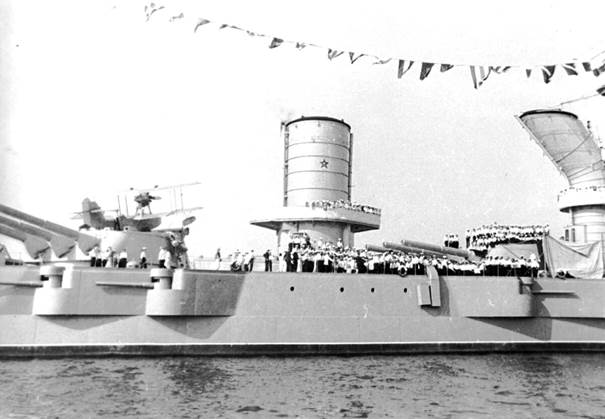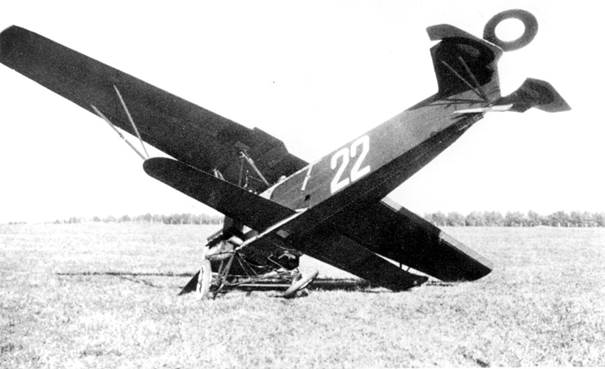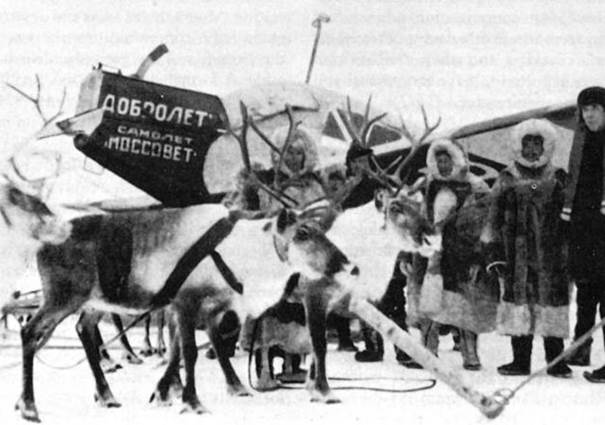The Story of the Conspiracy
The Treaty on Military Cooperation between the Soviet Union and Germany was signed in 1922. It operated for more than 10 years, but the fact of its existence became known only 70 years later! The USSR and Germany agreed on… the deployment of secret military facilities of the Reichswehr on Soviet territory. It was this treaty that served as the basis for the revival of Germany’s military power and ultimately helped it become a superpower and conquer half the world.

The assembly shop of the Junkers factory in Fili. Manufacture of the wing of the Junkers G-1 (K-30) aircraft
The Treaty of Versailles, among other restrictions, forbade Germany to have its own military air force at that time. Germany, on the other hand, constantly sought to circumvent the restrictions. The Soviet Union, in turn, was in dire need of military technology and qualified specialists who knew how to handle modern weapons. This is how the idea of a secret agreement between the Red Army and the Reichswehr arose. In April 1922, the Soviet-German Treaty of Rappala was signed, and secret military facilities of the Reichswehr appeared on the territory of the USSR.
As a result of negotiations held by the chairman of the Revolutionary Military Council of the republic, Leon Trotsky, and the chief of staff of the Red Army, P. Lebedev, with representatives of the Reichswehr and large industrialists, it was decided to create German military production structures in the RSFSR under the guise of joint Soviet-German enterprises and concessions. This decision was documented in a secret agreement “On the Construction of the Russian Military Industry and the Manufacture of War Materials for Germany.” As a result, the Junkers company began the construction of an aircraft plant in Fili near Moscow, which, after commissioning, produced several hundred combat aircraft annually. There was a violation of the Treaty of Versailles, but no one even guessed about these facts, and the first documentary evidence was received only 60 (!) years later, in 1995.

The representative office of the Junkers company occupied an entire mansion in the center of Moscow
The first and largest German military facility on the territory of the USSR was the aviation school in Lipetsk. Initially, it was supposed to be located in Odessa. There is also evidence that German pilots trained for a short time at an airfield near Smolensk.
The creation of the training center began in 1924 on the basis of the Lipetsk Higher School of Military Pilots. The creation of the aviation school was supervised by the so-called “Aviation Inspection No. 1” of the German Defense Administration (Wehramt). For this purpose, back in 1923, Germany secretly purchased 100 Fokker D-X fighters from Holland, and on June 28, 1925, the first 50 aircraft and other aviation equipment were sent from Stettin to Leningrad on the steamship Edmund Hugo Stinnes.
At first, the pilots of the former Kaiser’s aviation underwent retraining in Lipetsk, then they began to train future Luftwaffe pilots. Cadets who completed their studies were immediately awarded the rank of officer. In total, during the period of its existence, from 1925 to 1933, about 450 pilots were trained at the Lipetsk school, of which about 120 were fighter pilots. There is still no accurate data on the number of Soviet pilots and technicians who were trained at the Lipetsk school.

German aircraft formed the basis of naval aviation in the USSR in the 1930s. Heinkel 55 seaplane on the main caliber turret of the battleship October Revolution, 1933.
Great attention was paid to secrecy. Even in the top-secret agreement on the organization of a flight school in Lipetsk, the parties disguised their real names. This is how the Soviet side was called RL (Russiche Luftwaffe – Soviet Air Fleet), and the German SGM (Sondergruppe Moskau – Moscow Special Group). The school itself was disguised as the 4th Squadron of the Red Banner Air Fleet.
German pilots were sent to the Soviet Union as civilians, with passports with fictitious names and surnames. For the period of training in the USSR, officers were excluded from the lists of the Reichswehr and were restored in rank only after returning to Germany. In Lipetsk, they wore Soviet military uniforms without insignia.
Even the death of the pilots was surrounded by the strictest secrecy. The coffins with the corpses of the German pilots who crashed in Lipetsk were packed in boxes labeled “machine parts” and sent by sea to Germany. They were taken out of the port of Stettin with the help of several customs officers who were a little familiar with the matter.

Two Dobrolet Junkers F 13 aircraft took part in a flight from Moscow to Beijing in the summer of 1925. On the R-RDAP “Pravda” (b/n 673) pilot V.B. Kopylov.
The secret Lipetsk facility was the largest of the Reichswehr training centers that existed on the territory of the USSR. In addition to the aviation school in Lipetsk, the Reichswehr tank school was located in Kazan, as well as a top-secret chemical warfare school known as “Object Tomka”. The management of all military facilities of the Reichswehr on the territory of the USSR was carried out by the so-called ZM (Zentrale Moskau-Moscow Center) – the operational headquarters under the command of Colonel Hermann von der Liet-Thomsen. Annually, 2 million Reichsmarks were allocated for the maintenance of the aviation school.
Studies at the aviation school took place under the vigilant control of the military leadership of the Reichswehr. Major General W. von Blomberg, Chief of the Reichswehr Military Administration, Major General H. von Mittelberger, Chief of the Organizational Department of the Army Administration, and Major G. Felmy, the future Luftwaffe General, Commander of the Reich 2nd Air Fleet, and at that time Major G. Felmy, visited it on inspection trips.

Junkers F 13 R-RDAA (b/n 649) of the Moscow City Council, during the flight of V.L. Galyshev from Krasnoyarsk to the north in March 1926.
The level of combat training received by German pilots in Lipetsk was highly appreciated by the German command. A test pilot at the Junkers plant in Fili, Morzik later commanded the entire Luftwaffe transport aviation, Captain Fiebig commanded the Air Corps during the Battle of Stalingrad and exercised general command of the Luftwaffe forces in the area, and a former cadet of the Lipetsk training center Jeschonek became Chief of the General Staff of the Luftwaffe.
Tested at the Lipetsk Center, under the guise of commercial, prototypes of aircraft served as the basis for the creation of fighters and bombers of the Third Reich. As it became known later, during training flights, German pilots, secretly from the Soviet command, constantly carried out aerial photography of the flight areas. On the basis of the photographs obtained, the German staff officers compiled detailed maps of the central part of Russia, which were transmitted to all army units.

Accident of the Lipetsk school (school identification mark on the tail of the aircraft)
From the first days of the existence of the aviation school, it became clear that the command of the Reichswehr did not want to acquaint representatives of the Red Army Air Force with the latest tactical and technical achievements of German military aviation. The German side in every possible way avoided discussing issues related to the transformation of the aviation school in Lipetsk into a joint research center. This was especially evident in the early 1930s, when relations between the USSR and Germany began to change for the worse. The German leadership’s policy of rapprochement with Great Britain and France became more and more apparent, and it sought more and more opportunities to organize military production and train Reichswehr personnel on its territory.
The turning point came with Hitler’s rise to power. It was decided to gradually curtail the activities of the secret facilities of the Reichswehr. Formally, not to sever all ties at once, but gradually, creating difficulties for their activities. But after the decision was made to break off military cooperation with Germany, all Reichswehr facilities on the territory of the USSR were liquidated in August-September 1933, and their property was transferred to the Red Army. The cost of the equipment of the Lipetsk center abandoned by the Germans was only 3 million marks, and we were left with about 50 broken planes, which the Germans did not even take to Germany. A rather modest price to pay for eight years of testing new aircraft and instruments, improving ammunition, training personnel, and mapping for a future offensive.
A. Kozyrev, journalist. Saint Petersburg
